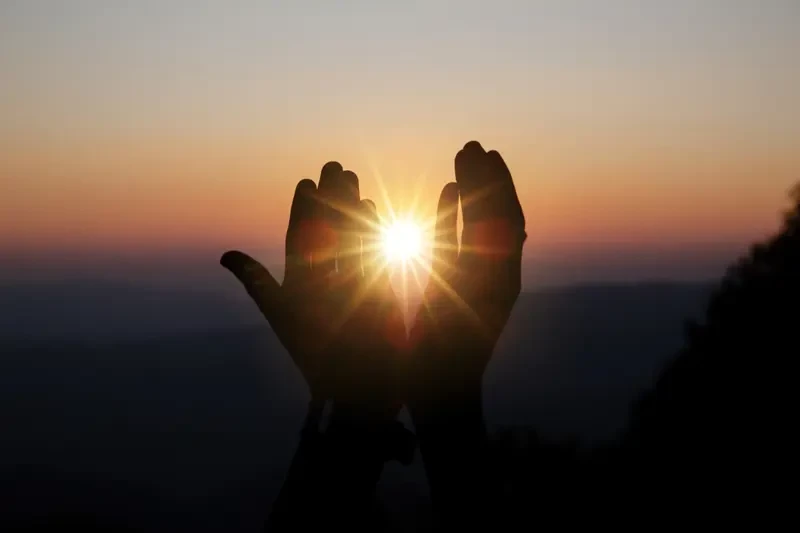
The desert peak upon which the Hebrew Bible says God gave the Torah to Moses.
Mount Sinai is the desert peak upon which the Hebrew Bible says God gave the Torah to Moses and the Israelites.
In the Bible, Sinai is also described as a desert or wilderness, which supports the widespread belief that the mountain was located in the Sinai desert, part of present-day Egypt, where there is a mountain by that name.
However, the precise location of the biblical Mount Sinai is a matter of dispute, with the Arabian peninsula and Israel’s Negev desert suggested as alternative locations.
Several other names are given for Mount Sinai in the Bible, including har ha-elohim and har adonai (both translated as “mountain of God”).
The Torah also makes several mentions of a mountain called Horeb, which the Talmud notes is Sinai’s true name. Exodus 3:1 refers to Horeb as the “mountain of God,” an appellation also used in connection with the account of the revelation at Sinai in Exodus 24.
And in Deuteronomy, Horeb is named several times as the site where God spoke to the Israelites and made a covenant with them.
Horeb is also the site where Moses had his encounter with the burning bush.
- Grace tidings: Do you understand what it means to be holy?
- Witness will testify that Kelly Khumalo shot Senzo Meyiwa by mistake – defence lawyer
- Grace Tidings: The grace of God and His unconditional love
- Re-imagining the Workplace: The psychology of visions and missions
Keep Reading
The biblical account of what transpired at Sinai is sprawling, narrated over many chapters in multiple books of the Bible, with some inconsistencies among them.
According to the text, Moses ascends the mountain multiple times and receives two sets of tablets inscribed with the Ten Commandments, along with other laws pertaining to the building of the Tabernacle. Other laws were given in the Tabernacle itself at the foot of the mountain. Jewish tradition teaches that not only was the text of the Five Books of Moses (the first five books of the Hebrew Bible) delivered at Sinai, but also the entirety of the Oral Tradition that was only centuries later written down, beginning with the redaction of the Mishnah.
Thus, the entirety of Jewish legal and ethical law can be said to trace back to the encounter between God and Moses at Sinai.
There are a number of legends about Sinai, perhaps the best-known of which is in the Midrash (Bereishit Rabbah 99), which relates that at the time of the giving of the Torah, other mountains came complaining to God that they were more worthy of being the site of revelation.
God responded that while the other mountains might be lofty, they were also the site of idolatry, while Mount Sinai was not.
As the Talmud confirms (Sotah 5a), God chose Sinai precisely because its lowly peak made it a symbol of humility.
Another story, related in the Talmud (Shabbat 88a), plays off the Torah’s statement that at the time of revelation, the Israelites stood at the foot of the mountain (b’tachtit ha-har, in Hebrew).
Rabbi Avdimi bar Hama bar Hasa rereads that phrase as indicating that God “overturned the mountain above like a tub, and said to them: ‘If you accept the Torah, excellent, and if not, there will be your burial.’” This teaching has inspired significant commentary seeking to recast what appears to be God’s coercion of the Jewish people into accepting the Torah.
Among the many suggestions is that rather than threatening the people, suspending the mountain above them as intended as protection from the intensity of God’s presence during the revelation.
The Talmud also speculates about the origins of the name Sinai. The rabbis suggested the name could be related to miracles (nissim), omen (siman), and hatred (sina), the latter indicating that Sinai was the place from which hatred descended upon the nations that did not accept the Torah.
Later commentators have suggested that the name is etymologically linked to the Hebrew word sneh, or bush, a reference to Moses’ encounter at the burning bush.
Today, the mountain known as Sinai (or Mount Moses in Arabic) is a tourist destination in the town of Saint Catherine, in the southern part of Egypt’s Sinai peninsula. The Eastern Orthodox Saint Catherine’s Monastery, among the oldest in the world, is located at the town’s eastern edge










